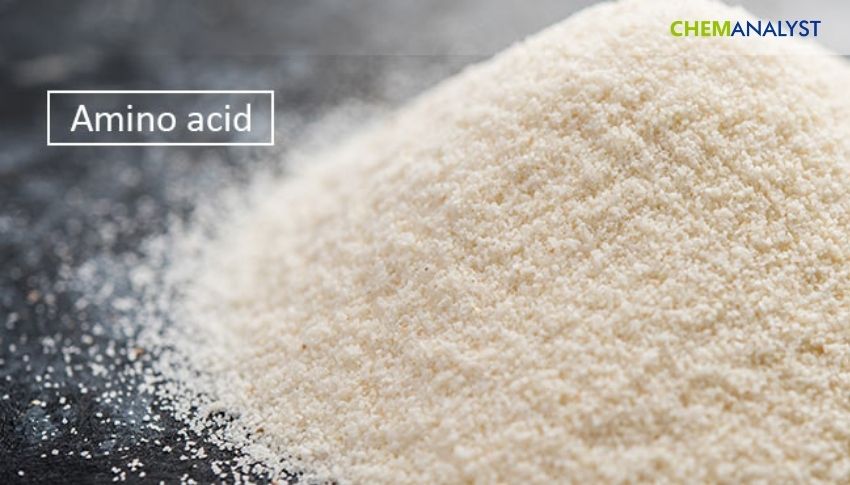Welcome To ChemAnalyst

In July 2025, U.S. amino acid prices fell as a result of soft feed and food sector demand, high inventories, and cheaper imports from Asia. Soft raw material prices and conservative downstream buying contributed to the weakness. A modest price recovery, however, is expected in August due to seasonal restocking, favorable feed sector demand, and possible Asian supply disruptions. Market participants continue to monitor supply and policy changes driving recovery.
The U.S. amino acid market experienced net downward pressure in prices over an extended period during July 2025, driven primarily by weakening demand fundamentals as well as easing input prices. Sources indicate that spot major traded amino acids like lysine, methionine, and tryptophan declined on average by 5.2% month-on-month. This gentleness extended to other major amino acids such as threonine, valine, leucine, isoleucine, arginine, histidine, and phenylalanine that were similarly impacted by bearish attitudes and excess supplies in stocks.
The market for amino acids declined primarily because of sluggish purchases from the animal feed, food processing, and nutraceuticals industries.The buyers remained cautious owing to adequate existing stocks for amino acid coupled with uncertain recovery of downstream demand. Feed manufacturers continued to source under just-in-time purchase concepts, further depressing the call for large-volume deliveries.
From the supply side, the excess in the world's production—particularly from China and Southeast Asia—was the key. With poor demand locally for amino acid, producers in Asia focused on export destinations, sending competitively priced cargoes flooding into the U.S. U.S. importers flocked to take advantage of these lower-cost cargoes, taking advantage of the favorable window of arbitrage. Also, Trans-Pacific freight prices stabilized, aided by lower bunker fuel prices and improved equipment availability, which together shaved the CFR (Cost and Freight) value of amino acids into U.S. ports.
Weather conditions also affected downstream consumption. Scorching temperatures in the Midwest and Southern United States limited the production of animal feed as heat stress lowered poultry and cattle feed conversion rates. This made its own contribution to overall drops in feed-grade amino acid use. On the other hand, food and supplement makers did not overbuy with adequate inventory in the pipeline and conflicting macroeconomic signals.
On a cost of production basis, corn and soybean derivative feedstock prices eased due to favorable crop outlook, supporting U.S. fermentation facilities. But to protect profit margins from eroding spreads, some secondary U.S. producers cut operating rates for amino acid and restricted local supply in line, although not enough to counteract cheaper imports.
There remains softness lingering, but sentiment is optimistically holding onto the hope of an eclectically weak rally starting mid-August 2025.. Expected restocking before the fall rush, a probable increase in feed industry purchases, and firm retail consumption in the pharmaceutical and sports nutrition space may underpin prices. Additionally, supply chain disruptions—whether from typhoons in East Asia, energy rationing, or shipping hold-ups—can rapidly change global trade dynamics to U.S. sellers' favor.
Lastly, July 2025 was characterized by widespread price decreases in the U.S. amino acid market, supported by oversupply on a global basis and slow demandHowever, with seasonal restocking and minor demand triggers in sight, the outlook for August 2025 suggests a possible inflection point, albeit gradual. Market participants are advised to monitor shifts in global logistics, agricultural input pricing, and U.S. feed policy developments as key influencers for short-term recovery for amino acid across the market.
We use cookies to deliver the best possible experience on our website. To learn more, visit our Privacy Policy. By continuing to use this site or by closing this box, you consent to our use of cookies. More info.
